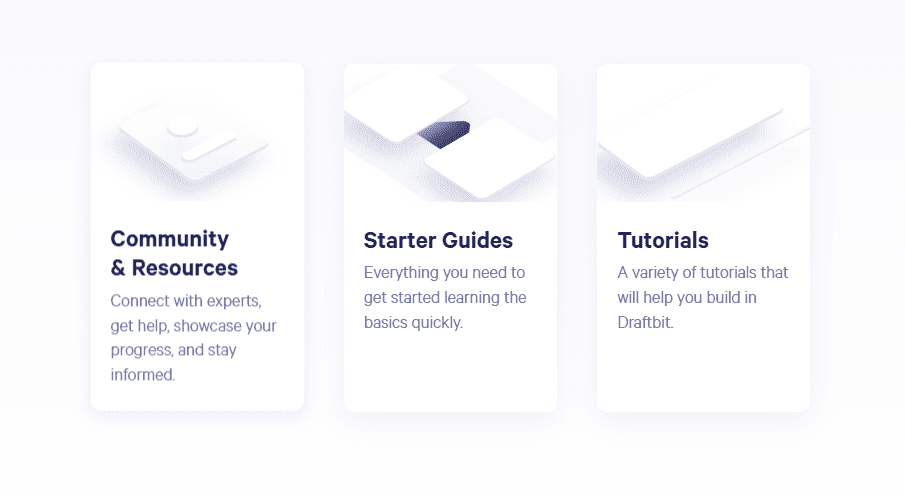Build Your Dream Mobile App in Minutes: The Draftbit Advantage. Have you ever had a brilliant idea for a mobile app but felt stuck at the implementation stage? Perhaps you’ve been quoted thousands of dollars by development agencies or faced the daunting prospect of learning Swift, Kotlin, or React Native from scratch. If this sounds familiar, you’re not alone — and there’s now a solution that’s changing the game for aspiring app creators.
Enter Draftbit, a low-code platform that’s making native mobile app development accessible to entrepreneurs, small businesses, and creative professionals without extensive programming knowledge. With its visual development environment and powerful underlying architecture, Draftbit is shrinking development timelines from months to minutes while maintaining the quality and performance of traditionally coded applications.

The Rise of Low-Code Development
Before diving into Draftbit’s specific capabilities, it’s worth understanding the broader revolution happening in software development. Low-code platforms are fundamentally changing who can create software and how quickly they can do it.
In the traditional app development world, turning an idea into a working application requires multiple specialists: UI/UX designers, frontend developers, backend engineers, and QA testers. This approach is not only expensive but incredibly time-consuming, with typical development cycles stretching across months.
Low-code platforms like Draftbit are disrupting this model by combining visual tools with pre-built components and automation, effectively democratizing app creation. What once required a team of specialists can now be accomplished by a motivated individual with a clear vision — even without deep technical expertise.
What Makes Draftbit Different?
Launched in 2017 and headquartered in Chicago, Draftbit has quickly established itself as a leader in the low-code space. After securing $150,000 in seed funding with Y Combinator’s participation in August 2019, the company has focused on creating a platform that strikes the perfect balance between accessibility and power.
Here’s what sets Draftbit apart from other development tools:

Native Cross-Platform Development
Unlike some alternatives that create web-based apps wrapped in a mobile container, Draftbit generates truly native applications for both iOS and Android. This means your apps will have:
- Better performance and responsiveness
- Full access to device features like camera and GPS
- A genuinely native feel that matches each platform’s design guidelines
- Higher approval rates when submitting to app stores
When you build with Draftbit, you’re not creating a compromise — you’re building professional-grade applications that stand alongside those developed with traditional coding methods.
Visual Development with Coding Flexibility
Draftbit’s interface combines drag-and-drop simplicity with the option to dive into the code when needed. This hybrid approach means:
- You can assemble screens visually, dragging components into place
- Styling and layout can be handled through intuitive controls
- When you need custom functionality, you can access and modify the underlying React Native code
- As your skills grow, you can take greater control over the codebase
This flexibility makes Draftbit suitable for both beginners and experienced developers looking to accelerate their workflow. Unlike completely closed “black box” systems, Draftbit lets you peek under the hood and make precise adjustments when required.
Component-Based Architecture
At the heart of Draftbit’s efficiency is its component-based approach:
- Pre-built components for common UI elements like buttons, forms, and navigation bars
- Custom component creation for your specific needs
- A growing library of community-contributed components
- The ability to save and reuse your own components across projects
This modular system dramatically speeds up development — you’re essentially assembling your app from building blocks rather than crafting each element from scratch.
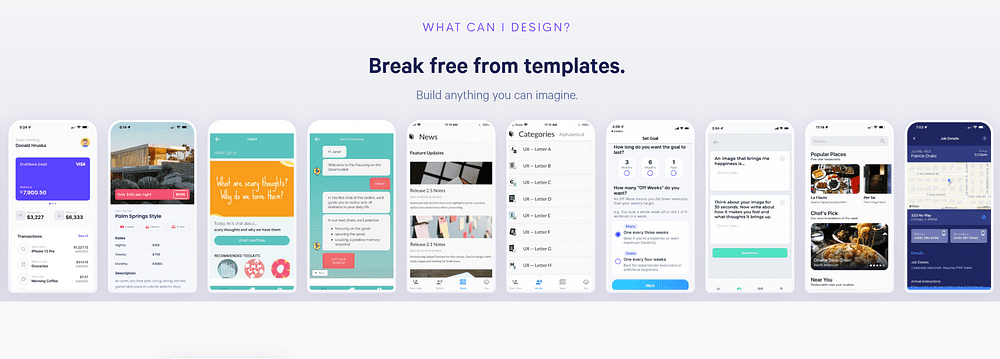
Real-Time Collaboration
For teams working on app projects, Draftbit offers collaboration features that keep everyone in sync:
- Multiple team members can work on the same project simultaneously
- Changes are visible in real-time
- Version control prevents conflicts and preserves work
- Different permission levels allow appropriate access for designers, developers, and stakeholders
These tools make Draftbit especially valuable for small businesses and startups where roles often overlap and efficient collaboration is essential.
How Draftbit Accelerates Your Development Timeline
The most striking benefit of Draftbit is how dramatically it compresses the app development timeline. Here’s what the process typically looks like:
- Start with a template or from scratch — Choose from pre-built templates for common app types or start with a blank canvas.
- Design your UI visually — Drag and drop components to create screens, adjust properties through intuitive panels rather than code.
- Configure navigation and logic — Set up how users will move between screens and how the app will respond to different actions.
- Connect to data sources — Integrate with APIs, databases, or services to power your app with real data.
- Test in real-time — See immediate previews of your work on actual devices or simulators.
- Export production-ready code — Generate clean React Native code that’s ready for submission to app stores.
What’s remarkable about this workflow is that each step can be completed without writing code (though you can customize with code if you choose). Tasks that would have required specialized knowledge and hours of implementation can now be accomplished in minutes with a few clicks.
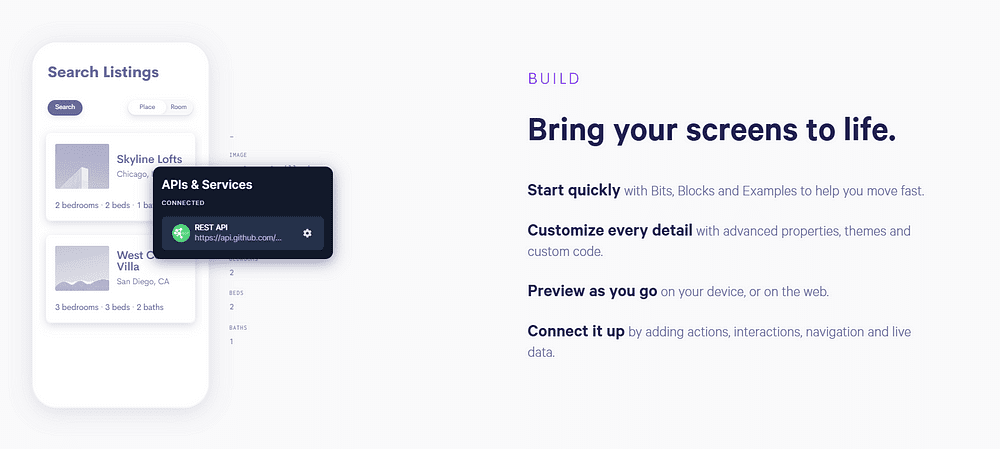
Draftbit vs. Top Alternatives: Finding Your Perfect Fit
While Draftbit offers an impressive platform, it exists in a competitive landscape with several notable alternatives. Understanding how it compares can help you choose the right tool for your specific needs:
Draftbit vs. Bubble
Bubble excels at web application development with a robust visual programming interface. Unlike Draftbit’s focus on native mobile apps, Bubble primarily creates web apps that can be wrapped for mobile use.
- Choose Bubble if: You’re primarily focused on web applications with mobile as a secondary concern.
- Choose Draftbit if: Native performance and app store presence are priorities for your project.
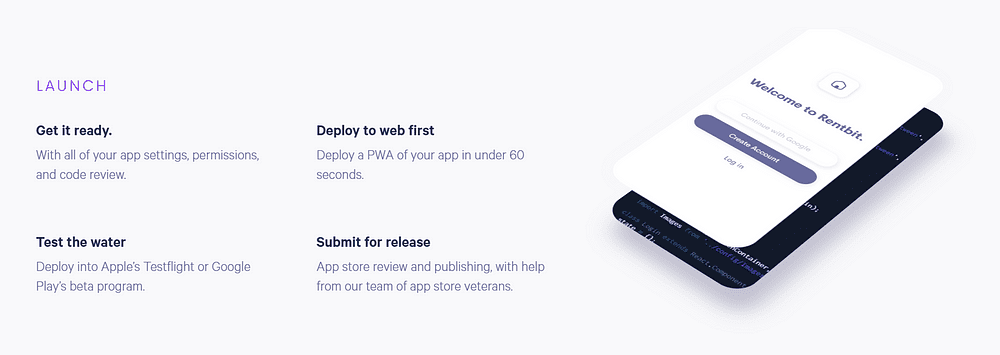
Draftbit vs. FlutterFlow
FlutterFlow is another visual builder, but it’s based on Google’s Flutter framework rather than React Native. It offers excellent performance and a growing ecosystem.
- Choose FlutterFlow if: You’re already familiar with Flutter or have developers on your team who are.
- Choose Draftbit if: You prefer React Native’s broader adoption and community support.
Draftbit vs. MIT App Inventor
MIT App Inventor is designed primarily for educational purposes and beginner experimentation. While it makes app creation accessible, it lacks the professional features of Draftbit.
- Choose MIT App Inventor if: You’re learning the basics of app development or creating very simple applications.
- Choose Draftbit if: You’re building a commercial-grade application intended for public release.
Draftbit vs. Glide
Glide specializes in turning spreadsheets into simple apps, making it extremely accessible for data-driven applications without complex logic.
- Choose Glide if: Your app is essentially a mobile interface for spreadsheet data.
- Choose Draftbit if: You need complex UI elements, custom functionality, or performance beyond what a spreadsheet-based app can provide.

Draftbit vs. AppSheet
AppSheet focuses on business applications and workflow automation, with strong integrations into enterprise environments.
- Choose AppSheet if: Your primary need is business process automation across mobile and web.
- Choose Draftbit if: You’re creating a consumer-facing app with emphasis on user experience and custom UI.
The common thread among these comparisons is specialization — each platform has optimized for certain use cases. Draftbit has positioned itself as the ideal choice for creating polished, native mobile applications without sacrificing customizability or performance.
Real-World Applications: What You Can Build with Draftbit
To better understand Draftbit’s capabilities, let’s explore some typical applications that are well-suited to the platform:

E-commerce and Marketplace Apps
Create shopping experiences with product catalogs, shopping carts, user profiles, and payment processing. Draftbit’s component system makes it easy to create consistent product listings and checkout flows.
Content-Driven Applications
Develop news readers, blogs, magazines, or video platforms that pull content from APIs or content management systems. Draftbit’s data connection tools make these implementations straightforward.
Service Booking Systems
Build apps for appointment scheduling, ticket booking, or service reservations with calendar integrations and user authentication.

Community and Social Platforms
Create niche social networks or community platforms with user profiles, activity feeds, and messaging capabilities.
Internal Business Tools
Develop company-specific applications for inventory management, field service operations, or custom CRM functions that connect to your existing business systems.
What’s notable is that these aren’t just simplified versions of these applications — with Draftbit, you can create fully functional, professional-grade solutions that stand up against traditionally coded alternatives.
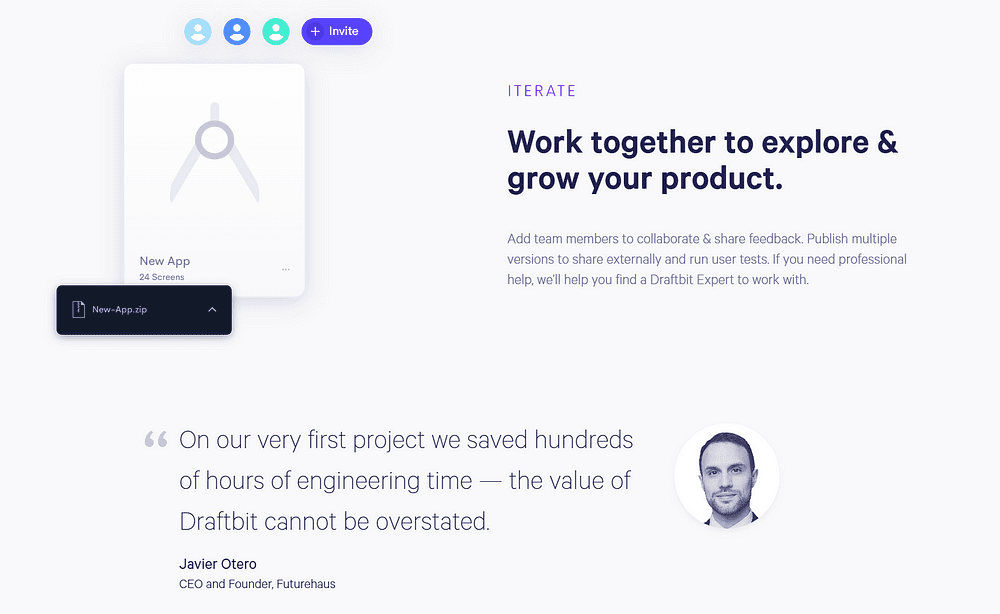
Getting Started: Your First Draftbit Project
If you’re interested in exploring Draftbit, here’s a simplified roadmap to get your first project underway:
- Sign up for an account on Draftbit.com and familiarize yourself with the dashboard.
- Choose a starting point — Either select a template that matches your project needs or start from scratch.
- Design your app’s key screens — Begin with the most important screens (home, login, profile, etc.) to establish your app’s core flow.
- Set up navigation — Configure how users will move between screens using tabs, stacks, or drawers.
- Connect your data — Integrate with your data sources, whether that’s a custom API, Firebase, or another database.
- Test thoroughly — Use the preview tools to experience your app as users will, testing different screen sizes and use cases.
- Export and deploy — When you’re satisfied, export your project for submission to app stores or further custom development.
What makes this process particularly accessible is Draftbit’s extensive documentation and growing community. Even when you encounter challenges, resources are available to help you overcome them without needing to hire specialized developers.
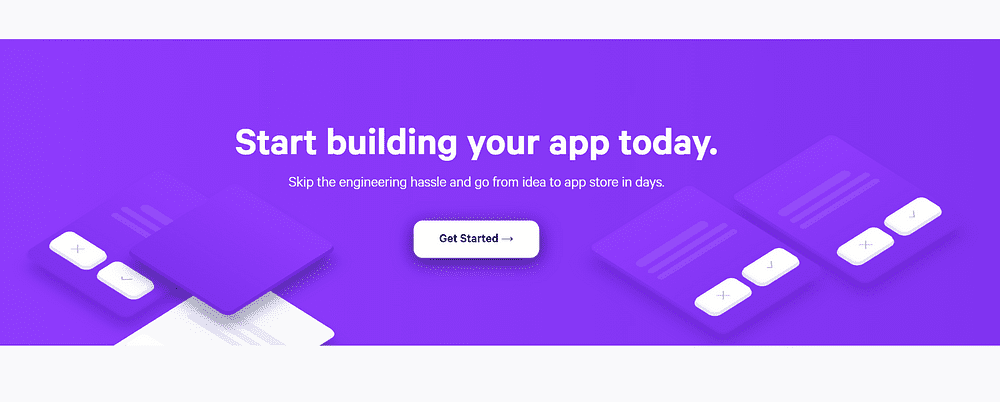
Limitations to Consider Before Diving In
While Draftbit offers impressive capabilities, it’s important to understand its limitations to set realistic expectations:
Learning Curve
Though easier than traditional coding, Draftbit still requires time to master. The interface is intuitive, but understanding concepts like component properties, navigation stacks, and data binding takes practice.
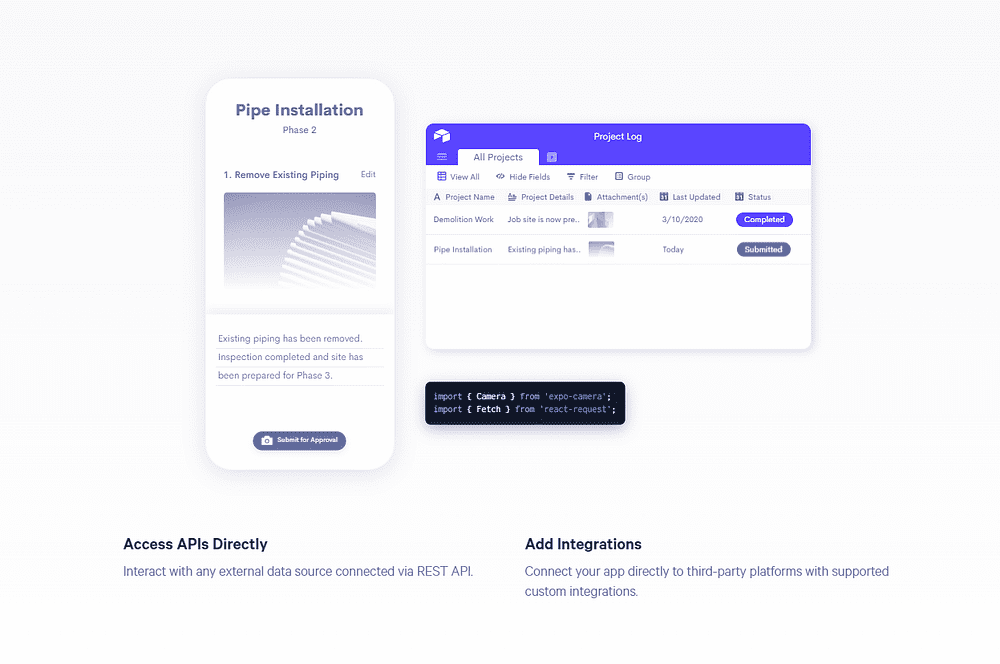
Customization Boundaries
While Draftbit offers extensive customization, there may be highly specialized features that require custom code. The good news is that Draftbit’s React Native foundation makes it possible to extend the platform when needed.
Performance Considerations
Complex applications with heavy animations or real-time processing might still benefit from fully custom development. However, for the vast majority of app concepts, Draftbit’s performance is more than adequate.

Ongoing Costs
Like most development platforms, Draftbit operates on a subscription model. You’ll need to factor these costs into your project budget, though they’re typically far lower than traditional development expenses.
Understanding these limitations isn’t meant to discourage you — rather, it’s about setting appropriate expectations. For most app projects, especially those from small businesses, entrepreneurs, or creative professionals, Draftbit’s benefits far outweigh these considerations.

The Future of Low-Code Development with Draftbit
As low-code platforms continue to evolve, Draftbit appears well-positioned for the future of app development. Here are some trends to watch:

AI-Assisted Development
Expect to see more AI-powered assistance in the development process, with suggestions for layouts, components, and even functionality based on your project description.
Expanded Component Ecosystems
The library of available components will likely grow, both from Draftbit itself and from community contributions, further accelerating development times.
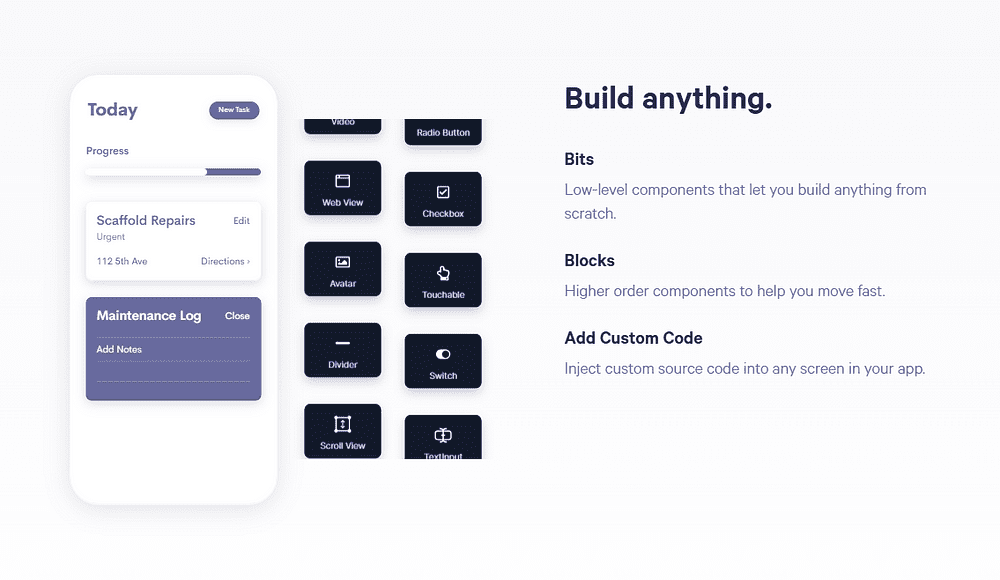
Enhanced Integration Capabilities
More pre-built integrations with popular services and APIs will make it even easier to connect your app to external systems and data sources.
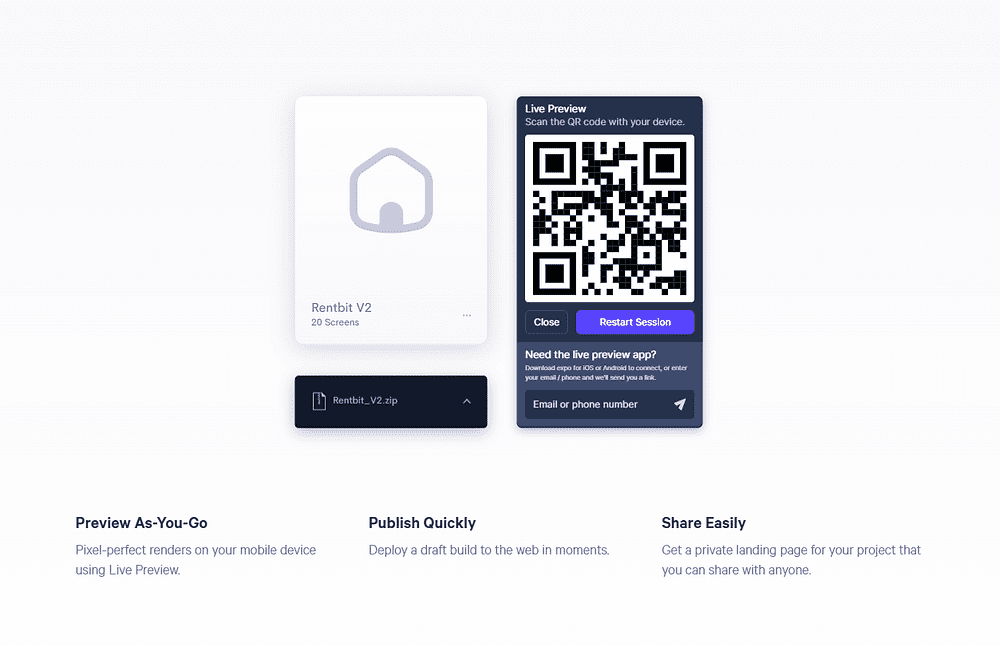
Advanced Customization Tools
The balance between visual development and code customization will continue to improve, giving developers more granular control while maintaining the speed advantages of low-code approaches.
As these advancements unfold, platforms like Draftbit will continue to lower the barriers to entry for app development, enabling more individuals and small businesses to bring their ideas to life.

Is Draftbit Right for Your Project?
After exploring Draftbit’s capabilities, comparing it with alternatives, and considering both its strengths and limitations, the key question remains: Is it the right choice for your app project?
Draftbit is likely an excellent fit if:
- You have a clear vision for your app but limited development resources
- Speed to market is a priority for your project
- Your app concept fits within the patterns of common mobile applications
- You want to maintain the option to customize code as your needs evolve
- Native performance and app store presence are important to your goals

On the other hand, you might want to explore alternatives if:
- Your application has highly specialized requirements that aren’t common in mobile apps
- You’re primarily building for web rather than mobile platforms
- Your team already has expertise in a different framework like Flutter
For most aspiring app creators, Draftbit represents an opportunity to transform ideas into reality without the traditional barriers of cost, time, and technical expertise. By dramatically lowering these barriers, it’s enabling a new generation of app entrepreneurs to bring their visions to life.
